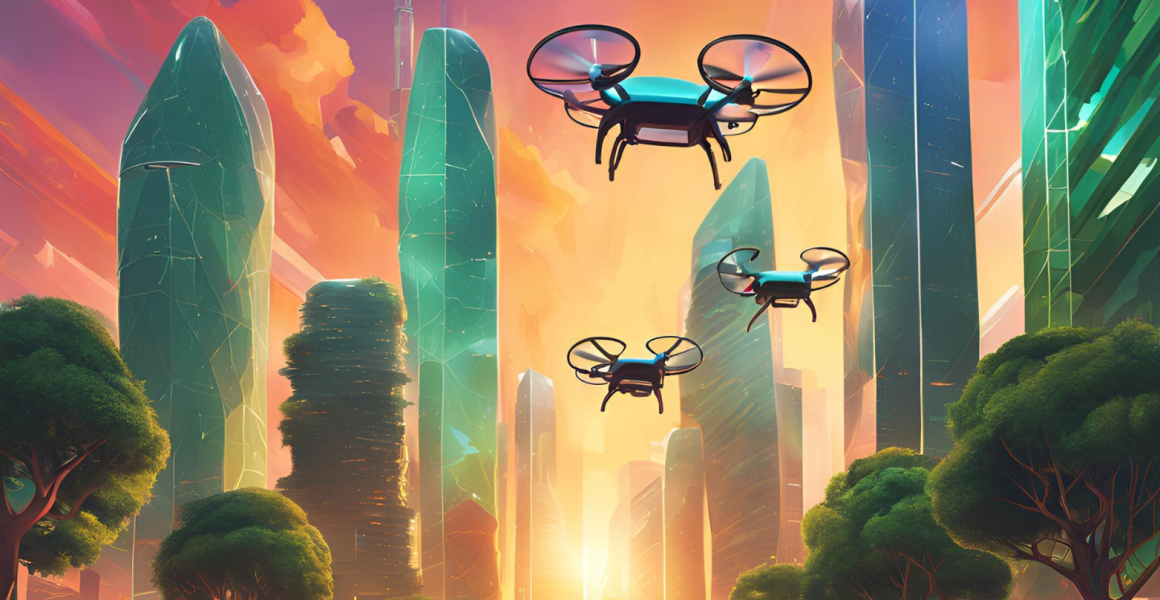The future of e-commerce logistics and last-mile delivery: navigating environmental impacts

The rapid expansion of e-commerce has profoundly influenced the world of retail, requiring an equivalent evolution in logistics and delivery systems. Central to this transformation is the optimization of last-mile deliveries. While this sector has shown remarkable growth and innovation, it also presents significant environmental challenges. Let's dive into the future of e-commerce logistics, explore innovative last-mile delivery solutions, assess their potential environmental impacts and suggestions for mitigating them.
The e-commerce logistics landscape is constantly evolving, driven by changing consumer behaviors and technological advances. Consumers now demand faster, more reliable and more economical deliveries, which forces companies to innovate and improve their logistics structures. The integration of technologies such as artificial intelligence (AI), machine learning and the Internet of Things (IoT) has increased the efficiency of these logistics operations, optimizing route planning, stock management and delivery times.
With the exponential growth of e-commerce, last-mile delivery has become a critical and differentiating component in the field of logistics. This stage, responsible for completing the product's journey to the end consumer, faces constant challenges in terms of efficiency and sustainability. That said, technological and operational innovations have been developed to optimize this stage, seeking not only to speed up deliveries, but also to reduce their environmental impact.
- Autonomous delivery vehicles: Companies are testing drones and autonomous vehicles to deliver packages. These vehicles can potentially reduce delivery times and carbon emissions by minimizing dependence on conventional, fuel-dependent delivery fleets.
- Electric vehicles (EVs): The adoption of electric vans and scooters is increasing, particularly in urban areas where delivery routes are shorter and charging infrastructure is more accessible. Electric vehicles offer a significant reduction in greenhouse gas emissions compared to traditional combustion engines.
- Micro-Fulfillment Centers: These are small warehouses, which can be automated, located in urban areas, which allow orders to be fulfilled quickly and efficiently. By locating stock closer to consumers, these centers reduce the distance traveled for deliveries, thus reducing carbon emissions.
- Crowdsourced delivery: This approach uses a network of local couriers who deliver packages using their vehicles, often integrating the deliveries with their commutes. This method can reduce the number of vehicles specifically dedicated to delivery tasks, reducing overall vehicle emissions.
The environmental impact of these innovations is not easy to analyze. On the one hand, technologies such as electric vehicles and autonomous vehicles can significantly reduce emissions per delivery. Micro-Fulfillment Centers can also contribute to reducing emissions by shortening delivery routes. However, the overall environmental footprint is influenced by several factors:
- Increased delivery frequency: As e-commerce grows, the volume of deliveries increases, which can lead to more vehicles on the road and higher total emissions, even if individual vehicles are cleaner.
- Packaging waste: E-commerce usually requires a lot of packaging, which contributes to waste and environmental degradation if not properly managed. Efforts to reduce packaging and use environmentally friendly materials are crucial.
- Energy consumption: The environmental benefit of electric and autonomous vehicles depends significantly on how the electricity is generated. If the energy comes from fossil fuels, the benefits can be negated. Thus, the sustainability of these technologies is interlinked with broader energy policies and the adoption of renewable energies.
It is therefore imperative to implement effective mitigation strategies. These strategies are essential for reducing the ecological footprint, promoting sustainability and ensuring the long-term viability of this sector. In this context, various approaches can be adopted, from the use of green technologies to the transformation of operational processes and the active involvement of consumers.
- Sustainable Packaging Solutions: Investing in biodegradable, recyclable or reusable packaging can significantly reduce waste.
- Integrated Technology Systems: Optimizing delivery routes and increasing collaborative logistics through data analysis and IoT can help reduce unnecessary journeys and emissions.
- Renewable Energy: Investing in renewable energy sources for warehouses and charging infrastructure is vital for electric delivery fleets.
- Consumer Engagement: Educating consumers about the environmental impacts of their delivery choices and offering more sustainable options can contribute to a reduced carbon footprint.
The future of e-commerce logistics and last-mile delivery has enormous potential for innovation and efficiency. While these advances offer significant opportunities to reduce environmental impacts, they also pose challenges that require careful management. By adopting sustainable practices, leveraging technology and involving consumers in eco-friendly initiatives, the e-commerce logistics sector can mitigate adverse environmental impacts and lead the way to a more sustainable future.
